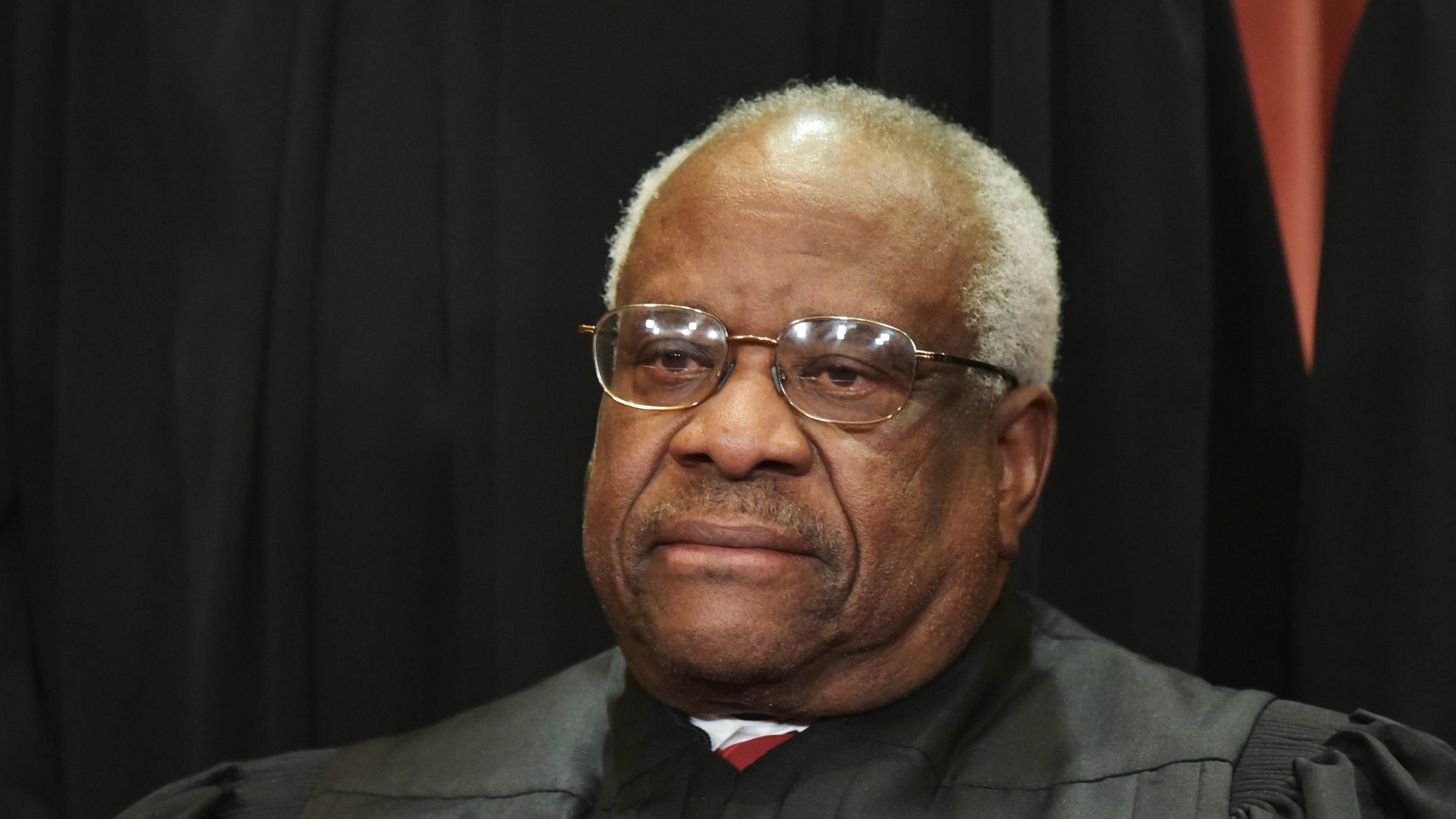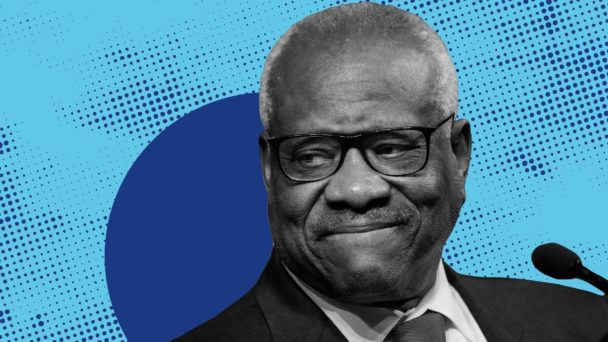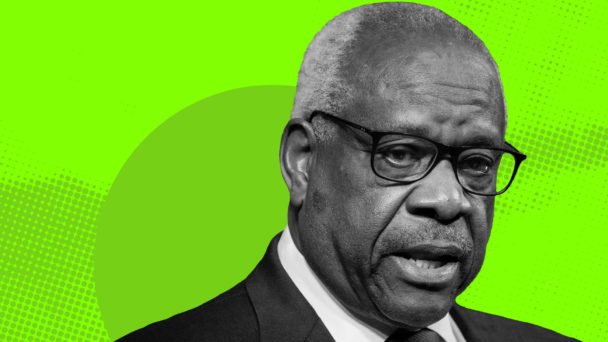In a one-sentence order last month, the Supreme Court declined to review Davis v. Smith, a case about an Ohio man challenging his conviction for attempted murder on the grounds that detectives had urged the victim, who repeatedly told them she could not remember who attacked her, to nevertheless identify him, David Smith, as the perpetrator. Last year, the Sixth Circuit Court of Appeals found in Smith’s favor, finding that police had obtained the identification “through unduly suggestive means,” and that state courts had “impermissibly excused this flagrant violation of Smith’s right to due process.” The Supreme Court’s decision to leave the appeals court’s ruling in place means that Smith will get a new trial sometime soon.
This result infuriated Justice Clarence Thomas, who wrote a dissenting opinion joined by Justice Samuel Alito. Most of the opinion is dedicated to excoriating the Sixth Circuit for, in Thomas’s words, the “egregious errors” in its application of the Antiterrorism and Effective Death Penalty Act, a 1996 federal law that limits the availability of habeas relief like that which Smith sought here. But Thomas’s gripes with the Sixth Circuit’s application of AEDPA reveal less about Thomas’s decisionmaking process than his introductory description of the facts—a lurid, true crime-style account of the attack on Tolliver that includes far more information than necessary to resolve the case. Thomas often writes opinions like this in criminal matters where he doesn’t get his way, because for him, protecting legal rights is not nearly as important as quenching his thirst for punishing someone whom he has decided deserves it.
The detectives who met Quortney Tolliver in the hospital after the attack, which took place in 2015, were undeterred by her uncertainty. They presented her with a photo of Smith, whom they described as a “very violent” and “cold-hearted” man with a lengthy criminal history, including a previous conviction for attempted murder. More than once, police explicitly told Tolliver, who’d suffered head injuries that limited her ability to communicate during her recovery, that Smith was the person who’d tried to kill her, and they reassured her they’d arrest him soon.
After a lengthy interrogation, Tolliver decided that she had met Smith previously through a mutual friend, and told detectives she’d had a “dream” that a bald Black man had maced her and hit her with a hammer. But she continued to assert that she barely knew Smith, and that he was not her attacker, and that she did not remember the incident at all. It was not until three months later, when Tolliver was sentenced in an unrelated case, that she changed her mind: Although no evidence of mace was found at the crime scene, Tolliver told detectives for the first time that she was “one hundred percent sure” that her “dream” was actually a memory of the attack. A jury convicted Smith in 2016, and he was sentenced to 22 years in prison.
Once incarcerated, Smith filed a petition for a writ of habeas corpus, arguing that the trial court should not have allowed prosecutors to present Tolliver’s identification to the jury as evidence. A three-judge panel of the Sixth Circuit agreed, holding that in light of the unreliability of Tolliver’s identification, “any fair-minded juror would conclude that the scale crashes to the side demanding suppression”; the trial court’s failure to do so, the Sixth Circuit continued, is “exactly the ‘extreme malfunction in the state criminal justice system’ that federal habeas corpus is intended to correct.” In other words, the Constitution does not permit cops investigating a crime to badger a victim in her hospital bed until she agrees to say that their suspect did it.

(MANDEL NGAN/AFP via Getty Images)
Thomas considers this to be an egregious miscarriage of justice. (The recognition of Smith’s rights, not the violations thereof.) To make his point, he begins with a little MapQuest-inflected smear: Smith and Tolliver met, he explains, on “an 80-mile road trip to Cleveland to purchase crack cocaine.” After their supply ran out, Thomas says, they agreed to return to Cleveland to buy more, but on the morning of their departure, “someone” entered Tolliver’s home, robbed her, and “brutally attacked her with a hammer.” How brutally, you ask? Thomas has an answer at the ready: After Tolliver came to, she “stumbled outside and screamed for help,” he writes, and “neighbors called an ambulance to take her to the hospital.” Doctors diagnosed her with “skull and facial fractures” and decided to place her in a medically induced coma.
From there, Thomas goes on to piece together the clues himself: Police determined that a “phone number connected to Smith” called or texted Tolliver 85 times in the 24 hours before the attack, he says. Cell phone data placed Smith’s phone near Tolliver’s home, and “DNA evidence recovered from the scene was consistent with Smith’s.” The implication is pretty clear: Thomas thinks he’s solved the case, and is annoyed that Smith’s appeal is even sitting on his desk.
The Sixth Circuit’s version of events is notably different. It does not mention how far Smith and Tolliver drove to buy drugs together, or indulge in Thomas’s lazy bit of editorializing-by-adverb. (If there is a way to hit someone in the head with a hammer without doing so “brutally,” I am unaware of it.) Instead, the Sixth Circuit simply states that someone attacked Tolliver with a hammer, and picks up the story “as soon as Tolliver regained consciousness” by describing the suggestive identification that is actually at the heart of this case..
All lawyers try to frame facts in ways that are most helpful to their legal arguments. But the difference here is that the facts Thomas highlights have nothing to do with the supposedly narrow legal questions of whether prosecutors violated Smith’s constitutional rights by presenting evidence that cops functionally manufactured, and how a federal statute that limits the availability of habeas relief bears on the analysis (if at all). As Nicholas Goldrosen wrote for Balls & Strikes in 2022, the badness of a crime does not magically create exceptions to the Constitution. Yet in cases like this one, Thomas has made a habit of including gruesome, cinematic details in his opinions, because he wants the reader to be as angry as he is at the abject cowardice of soft-on-crime judges allowing obviously guilty people to abuse bullshit technicalities to walk free.
Thomas drops all pretenses of dispassionate analysis in his opinion’s final section, where he outlines the “real consequences” of the Sixth Circuit’s choice. The state, he says, now “must retry Smith for a crime committed nearly a decade ago,” at a “steep cost for both society and the victim.” Retrying people like Smith, he continues, “diverts significant time and resources away from other law enforcement activities,” and inflicts “substantial pain on crime victims,” and gives criminals a “regrettable windfall.” The fact that prosecutors could have avoided all this unnecessary, duplicative work if they’d been able to secure a conviction without violating Smith’s due process rights seems not to have occurred to him.
Thomas and Alito’s contempt for this result reflects their shared belief about the purpose of the criminal legal system: hustling nameless, faceless defendants through the motions of a fair trial so that, with any luck, the prosecutor and the judge can take Friday off to play 18 holes together. On the rare occasion that the rules end up protecting someone like Smith, Thomas and Alito view it as an annoying inconvenience—a glitch in a system that is supposed to dispose of people smoothly and quietly. If, as here, they can’t persuade a majority of their colleagues to fix it, they are at least going to take a few pages to get upset about it.




